BI & Data Analytics
With a combined 40 years experience in Data and BI recruitment, we have been involved in the evolution of this industry for the last couple of decades and seen how data has shaped how we live our lives today.
TDP consultants are true experts in Data and Analytics recruitment, and we pride ourselves of being fully involved in the community. Through cultivating meaningful relationships over the last 20 years with accomplished Data & Analytics experts and organisations seeking our expertise, we have solidified our reputation for being a trusted partner who deliver exceptional service.
Our team can assist with roles including but not limited to:
- Data Engineers
- Data Scientists, AI and Robotics
- Data Governance and Ethics
- Insights and Campaign Analysts
- BI Analysts/Developers
- Data Analysts and Visualisation
- Senior Data and Analytics Leaderships roles
Get in touch

By Kara Porter
•
June 11, 2025
Welcome to Lunch with a Leader, where the Tech & Data People team sits down with IT leaders to uncover their career insights, challenges, and industry perspectives. Each conversation brings valuable lessons, trends, and advice to help our community grow and thrive. Grab a seat at the table and take in the insights from some of the best in the business.
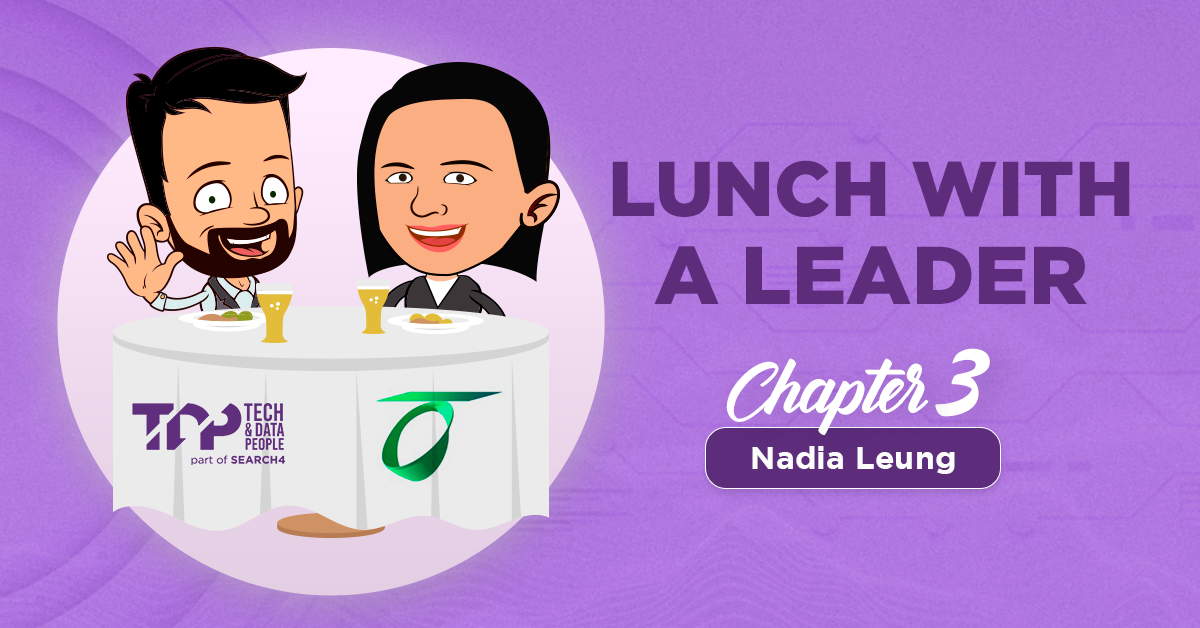
By Kara Porter
•
May 11, 2025
Welcome to Lunch with a Leader, where the Tech & Data People team sits down with IT leaders to uncover their career insights, challenges, and industry perspectives. Each conversation brings valuable lessons, trends, and advice to help our community grow and thrive. Grab a seat at the table and take in the insights from some of the best in the business.

By Kara Porter
•
May 8, 2025
We’ve entered an era where the smartest systems aren’t the loudest. they’re the ones you don’t even notice. Ambient Intelligence (AmI), or “ambient invisible intelligence,” is reshaping how we live and work, not with fanfare, but with subtlety. This is AI that whispers instead of shouts. It learns your habits, senses your environment, and responds without you lifting a finger. It’s the kind of intelligence that anticipates, not interrupts. So… why should tech professionals, recruiters, and business leaders care? What Is Ambient Intelligence (AmI), Really? Ambient intelligence refers to digital systems—AI, sensors, and networks—that are embedded into our environments to support humans quietly and contextually. Think beyond chatbots and flashy dashboards. This is: Smart lighting that adjusts based on mood or weather Healthcare systems that flag early symptoms before patients notice Cybersecurity that auto-defends without alert fatigue Enterprise tools that prioritise tasks based on your unique working patterns. It’s a tech layer that fades into the background. That is, until you realise you couldn’t function without it. A Silent Revolution in the Workplace Here’s the interesting bit: Ambient AI isn’t just for homes and smart cities. It’s quietly infiltrating our workplaces. Talent Platforms that serve candidates content before they search. Meeting Software that understands conversation flow and adjusts transcripts, follow-ups, or even sentiment analysis in real time. Facilities Management tools that adjust airflow, lighting, and noise levels based on occupancy and stress indicators. And all of this happens without user prompts. We’ve moved from “Hey Siri” to “Siri already knows.” Why It Matters for Tech Recruitment Let’s talk talent. As ambient intelligence grows, we’ll see rising demand for: AI/ML engineers with human-centred design experience Data privacy and ethics specialists IoT security experts UX professionals who understand invisible design Integration architects who can make fragmented systems feel cohesive. And here’s the catch: these roles often require cross-functional fluency. Tech meets psychology, meets ethics, meets design. Are we ready for that shift? Ethical Design in the Background There’s power in invisibility. But there’s risk too. When tech becomes ambient, it also becomes less visible to scrutiny. That means: Bias can go unchecked Data privacy can slip through the cracks Users can be nudged without realising it. The question is no longer can we do this? —But should we? Smart businesses will bring in people who can answer that. Invisible, but Intentional The future of AI isn’t a robot in the boardroom. It’s the algorithm silently removing barriers before they appear. Ambient intelligence is already here. You may have just not noticed it. Yet.
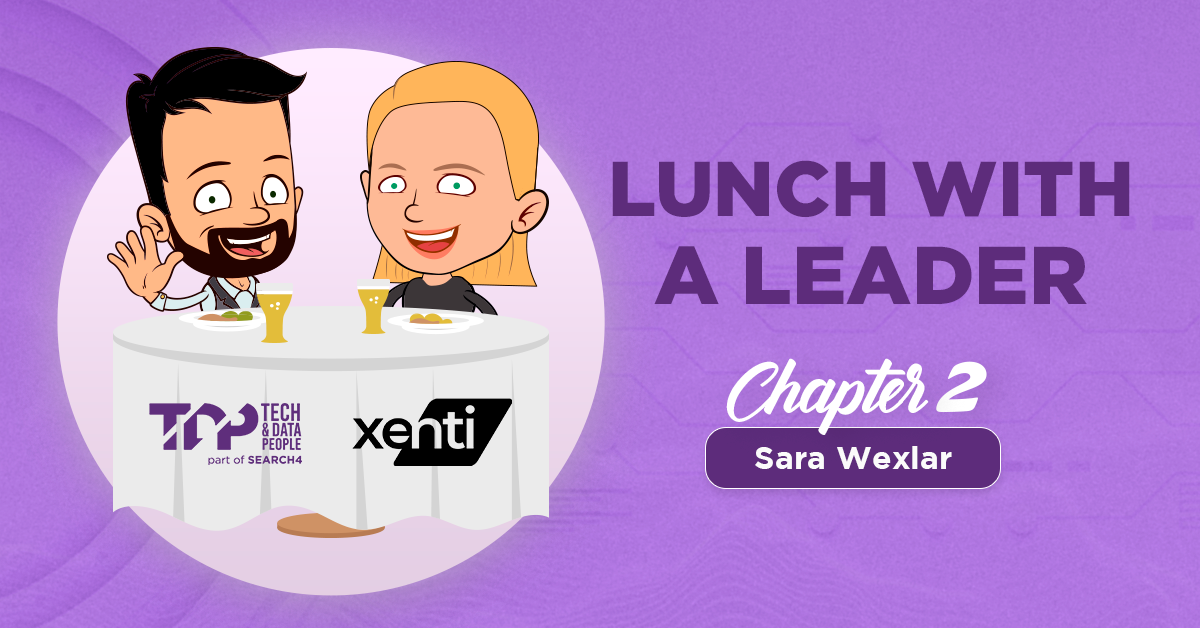
By Kara Porter
•
April 11, 2025
Welcome to Lunch with a Leader, where the Tech & Data People team sits down with IT leaders to uncover their career insights, challenges, and industry perspectives. Each conversation brings valuable lessons, trends, and advice to help our community grow and thrive. Grab a seat at the table and take in the insights from some of the best in the business.

By Kara Porter
•
March 26, 2025
Growing a tech team goes a little more in-depth than just getting bums on seats. That is, if you want to scale efficiently. As businesses expand, they often face a common dilemma: should they build an in-house team, buy talent through hiring full-time employees, or partner with external agencies and contractors? Each approach has its pros and cons, and choosing the right one depends on factors like budget, project scope, and long-term business goals. The Build, Buy or Partner Framework When to build (upskill & develop internal talent) Best for: Companies with existing talent that can be developed for long-term growth. Pros: Retains institutional knowledge Fosters a strong company culture Reduces external hiring costs over time. Cons: Takes time and investment in training Can be challenging if internal talent lacks specialised skills. When to choose this approach: When you have a solid foundation of junior-to-mid-level employees who can be trained When you’re looking to promote from within and build long-term loyalty When hiring budgets are tight, but internal development is feasible. When to buy (hire full-time employees directly or through an agency) Best for: Businesses needing stability and long-term expertise in critical roles. Pros: Provides dedicated resources fully committed to company goals Helps establish a strong, cohesive team culture. Cons: Lengthy hiring processes if running a direct process Higher upfront costs (salary, benefits, onboarding, training) Risk of turnover. When to choose this approach: When core business functions require in-house expertise (e.g., software engineers, DevOps, cybersecurity specialists) When long-term stability outweighs short-term cost savings When hiring in a talent-competitive industry where full-time employment is a key attractor. When to partner (contractors and recruitment agencies) Best for: Businesses needing flexibility, speed, or niche expertise. Pros: Faster time-to-hire, especially for specialised roles Cost-effective for short-term projects Access to a broader talent pool. Cons: Cultural integration can be trickier if partners aren’t well-briefed on your values and team dynamics May carry higher long-term costs but manageable with a strong partner who can help you strike the right balance with lasting talent. When to choose this approach: When working on short-term projects that don’t justify full-time hires When needing specialised skills that are difficult to recruit in-house When scaling rapidly and requiring immediate talent solutions When the target talent requires a more strategic brand positioning. Making the Right Hiring Decision Assess business goals: Align hiring strategy with long-term company objectives. Evaluate current team capabilities: Determine whether upskilling is an option before going to market. Consider cost vs. speed: Weigh the urgency of hiring needs against budget constraints. Mix & match approaches: A hybrid approach—combining direct hires with external partners—can offer the best balance of cost, flexibility, and expertise. Scaling a tech team effectively requires a strategic mix of building, buying, and partnering. By understanding the strengths and limitations of each approach, hiring managers can make informed decisions that support both immediate needs and long-term growth. Get in touch with our team to see how we can help set your business up for efficient and effective hiring.
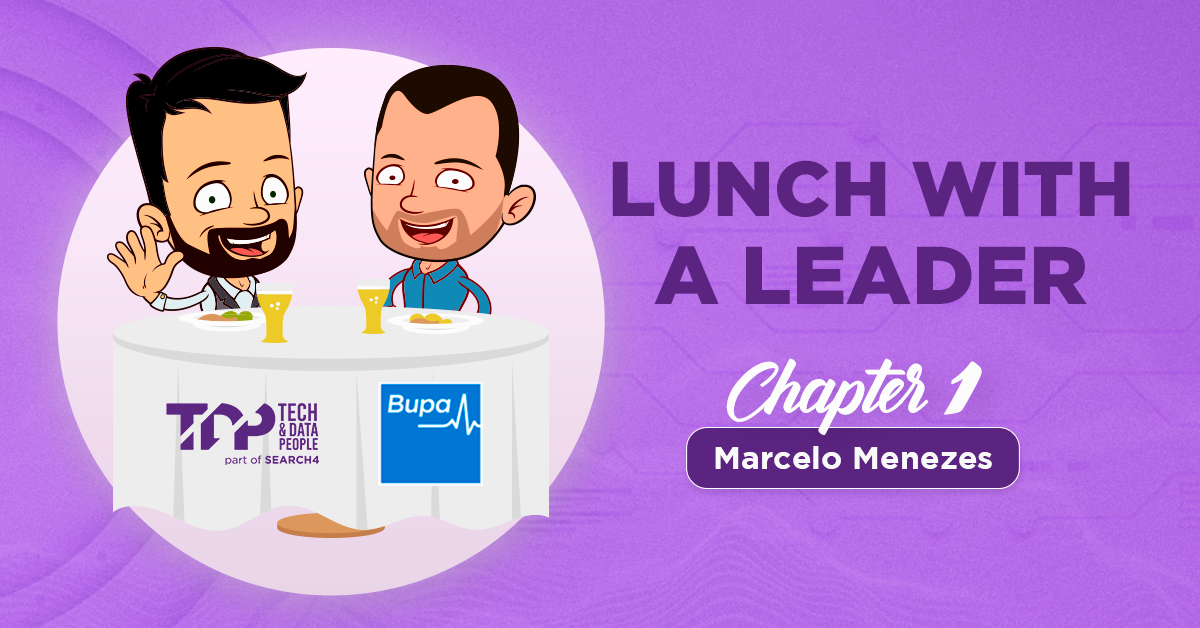
By Kara Porter
•
March 23, 2025
Welcome to Lunch With a Leader, where the Tech & Data People team sits down with IT leaders to uncover their career insights, challenges, and industry perspectives. Each conversation brings valuable lessons, trends, and advice to help our community grow and thrive. Grab a seat at the table and take in the insights from some of the best in the business.

By Kara Porter
•
March 4, 2025
When it comes to creating a thriving workforce, employee engagement and employee experience are often used interchangeably. However, while they may seem similar on the surface, they are two distinct concepts that are crucial to the overall health and success of an organisation. Understanding the difference between the two—and how they interact—can help employers build a more engaged, satisfied and productive team. What is Employee Engagement? Employee engagement refers to the emotional commitment an employee has to their organisation. It’s the level of enthusiasm and dedication that an employee brings to their role. Engaged employees are motivated, passionate about their work, and actively contribute to the company's success. Engagement is more about the intensity and quality of work rather than job satisfaction alone. In Australia, only 15% of employees are actively engaged in their roles, according to Gallup’s State of the Global Workplace 2022 report. While this is a global statistic, it’s clear that engagement levels remain low. What does this mean for Australian employers? It indicates a significant opportunity to invest in practices that can turn disengaged employees into highly motivated, committed individuals. Key characteristics of engaged employees include: Motivation: They are driven to do their best work every day. Passion: They care deeply about the company’s goals and values. Commitment: They are invested in the long-term success of the company. High productivity: Engaged employees tend to be more productive and efficient. What is Employee Experience? Employee experience, on the other hand, encompasses the entire journey of an employee with a company. From the moment they apply for a job, to their first day on the job, to their interactions with colleagues, and their day-to-day work life, employee experience is shaped by all touchpoints and interactions an employee has within the organisation. It’s more holistic and takes into account every aspect of an employee’s work life, both physical and emotional. In Australia, 73% of HR leaders agree that employee experience plays a critical role in employee engagement, according to The Australian HR Institute (AHRI) . However, it’s not just about the work environment; it’s about creating an experience where employees feel valued, supported and equipped to succeed. As 76% of employees are willing to leave their current employer for one that offers a better experience, the need for organisations to focus on improving the employee experience is more important than ever. Key factors that make up the employee experience include: Work environment: The physical and psychological aspects of the workplace (including flexibility, office design and culture) Onboarding: The process of introducing new employees to the company and setting them up for success. Company culture: The overall atmosphere, values, and norms within the organization. Professional development: Opportunities for growth, learning, and career advancement. Work-life balance: How well an organization supports employees in balancing work responsibilities with personal life. A side by side comparison While engagement focuses on the emotional commitment of an employee, experience covers the broader scope of their time with the company. Here’s how they differ:

By Kara Porter
•
February 26, 2025
Every time you shop online, stream music, or even scroll through social media, you feed AI with valuable data. Your preferences, behaviours and interactions fuel machine learning models that personalise your experience. But here’s the catch - you don’t own that data anymore. Big tech companies and enterprises are leveraging AI at an unprecedented scale, using consumer data to train sophisticated models for recommendation engines, facial recognition and even autonomous decision-making. And while AI-driven convenience is undeniable, the question remains: Who really owns your data? And do you have a say in how it’s used? The silent transaction: Your data for AI training AI thrives on data. The more it collects, the smarter it gets. But the transparency around this exchange is murky at best. Most terms of service agreements (those lengthy documents we all ignore!) grant companies broad permissions to collect, store and utilise user data for AI development. Take AI-powered chatbots or voice assistants. Every interaction refines their ability to respond more naturally. But what happens to those recordings? Where is that text data stored? More importantly, can you ever opt out once your data has already been used to train an AI model? The growing push for AI transparency Consumer trust in AI is on shaky ground. According to recent studies, 68% of consumers don’t trust companies to use their data responsibly . Data breaches, algorithmic biases and the rise of deepfake technology have only heightened concerns. Governments are starting to take action. The EU’s AI Act and frameworks like Australia’s Privacy Act Review aim to regulate how AI handles personal data. However, legislation is always playing catch-up with technology, leaving users in a grey area. What this means for businesses For businesses leveraging AI, consumer trust is the new currency. If customers feel like their data is being exploited without consent, they will disengage. Brands that prioritise transparency - by giving users control over their data, explaining AI decision-making, and ensuring ethical AI practices - will be the ones that thrive. Here’s what businesses should consider: Data consent: Make it clear when and how consumer data is being used for AI Explainability: If AI-driven recommendations or decisions impact users, explain the "why" behind them Opt-out mechanisms: Give users a way to remove their data from AI training sets. So…who really owns your data? Right now, companies do. But should they? As AI continues to evolve, the demand for data ownership, transparency and user control will only grow. The businesses that listen—and act—will be the ones that earn lasting consumer trust. What do you think? Should consumers have more control over how AI uses their data?

By Kara Porter
•
January 27, 2025
January often comes with the belief that it’s the best month to hire. Companies kick off the year with fresh budgets, strategic goals and an urge to fill vacant roles after the holiday lull. But is January truly the golden hiring window some make it out to be, or is it just another industry myth? The reality is more nuanced. Here’s why January hiring might not live up to its hype - and how to approach this critical time with strategy and precision. The Myths About January Hiring 1. “Everyone is job hunting after the holidays" It’s true that job boards and applications often see a spike in January. However, high activity doesn’t always translate to high-quality or committed candidates. Many professionals are still easing back into work and might not be ready to make significant career moves just yet. 2. "The early bird gets the talent" While being first to market with job ads might seem like a competitive edge, January also brings heightened competition among employers. With so many companies hiring simultaneously, your openings risk being drowned out unless you have a standout proposition. 3. "We can rush through hiring decisions" While moving quickly is important to secure great talent in a competitive market, prioritising speed over fit can backfire. January is a prime time for building momentum, but hasty decisions can lead to mismatches that impact team cohesion and long-term retention. The key is balancing efficiency with a focus on assessing skills, potential and cultural alignment. A well-planned hiring strategy ensures you don’t just hire fast—you hire right. The Realities of January Hiring Instead of blindly rushing to fill roles, businesses should consider: Engagement lags: Candidates may browse opportunities while dipping their toes back into work life, testing if their pre-holiday gripes were as bad as they remember. It’s a month of reflection - and hesitation. While some are eager for a fresh start, others need convincing that your opportunity is worth making a move. Role clarity matters: Vague job descriptions are a fast track to nowhere. If you’re not crystal clear about what you need, the best candidates will swipe left. Think outcomes, not fluff. Refining your expectations can be the difference between attracting rockstars or settling for “good enough.” February readiness: By mid-February, the holiday haze has lifted and many professionals are laser-focused on their next career move. With fresh clarity and renewed energy, it’s the perfect time to connect with top talent ready to make impactful decisions. Actionable Solutions for Smarter Q1 Hiring 1. Prioritise quality over speed Resist the urge to make quick offers just to check a box. Instead, focus on aligning candidates with your long-term business goals. Leverage January to fine-tune your hiring process Introduce structured interviews that assess both technical and soft skills Use targeted skill assessments to uncover candidates’ true potential. 2. Invest in proactive recruitment Waiting for candidates to come to you is yesterday’s strategy. Proactive outreach is the key to securing top-tier talent before your competitors do. How? Use talent mapping to identify high-potential individuals, even those not actively job hunting Leverage tools like LinkedIn Recruiter or AI-driven sourcing platforms to target candidates with the precise skills your team needs Partner with recruitment experts in your field to strategically map the market and connect you with the right people who align with your business objectives. 3. Review your employer brand Your employer brand is your talent magnet—make sure it’s pulling in the right people. January is the perfect time to refresh your messaging and showcase what makes your company stand out. How? Audit your job ads, careers page and employee collateral to ensure they reflect your values and culture Highlight key benefits like career progression opportunities, flexible work options and wellbeing programs - these are game-changers in a competitive hiring landscape. Double down on your unique selling points (USPs). Why should top talent choose you? Make it crystal clear. 4. Plan for February momentum January is for building. Focus on candidate engagement early and set the stage for meaningful conversations when professionals are ready to commit. How? Build pipelines in January, prioritising quality over urgency Host informal chats or attend networking events to establish rapport with potential hires - this personal connection can make all the difference Give candidates space to re-acclimate after the holidays, ensuring they feel ready and enthusiastic about formal discussions in February. 5. Reassess role clarity Hiring the right person starts with crystal-clear expectations. Vague or outdated job descriptions can deter top talent and lead to mismatched hires. How? Collaborate with leadership to refine each role’s purpose, key deliverables and how it aligns with broader business goals Ensure job descriptions are both accurate and enticing, showcasing not just responsibilities but the impact the role will have Speak directly to your ideal candidates by addressing their aspirations and emphasising growth opportunities within your company. 3 Mindset Shifts for Hiring Managers 1. Think Long-Term Instead of treating January as a sprint, view it as the foundation for your annual hiring strategy. Focus on creating sustainable processes rather than just filling seats. 2. Focus on Candidate Experience How you treat candidates during the hiring process can make or break your success. Communicate clearly, offer flexibility and follow up promptly. 3. Leverage Data Track metrics like time-to-hire, candidate engagement and quality of hire to continuously refine your approach. Data-driven decisions will always outperform gut instincts. January can be a powerful month to kick off your hiring strategy - but only if approached with intention. Avoid the pitfalls of rushed decisions and overcrowded markets by focusing on quality, planning for February and aligning your efforts with long-term goals. Need help setting your team up for hiring success? Get in touch - we'd be happy to help.
